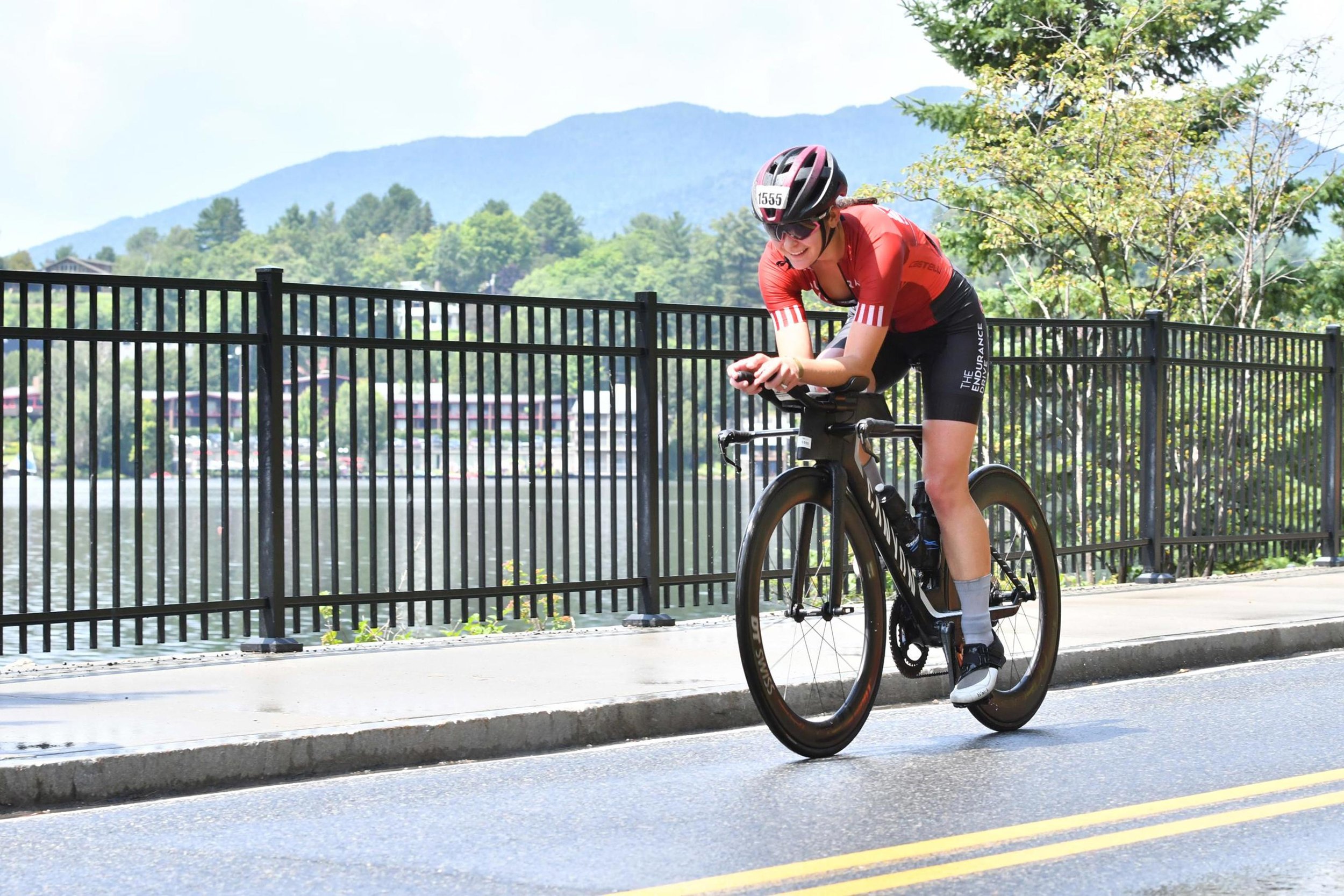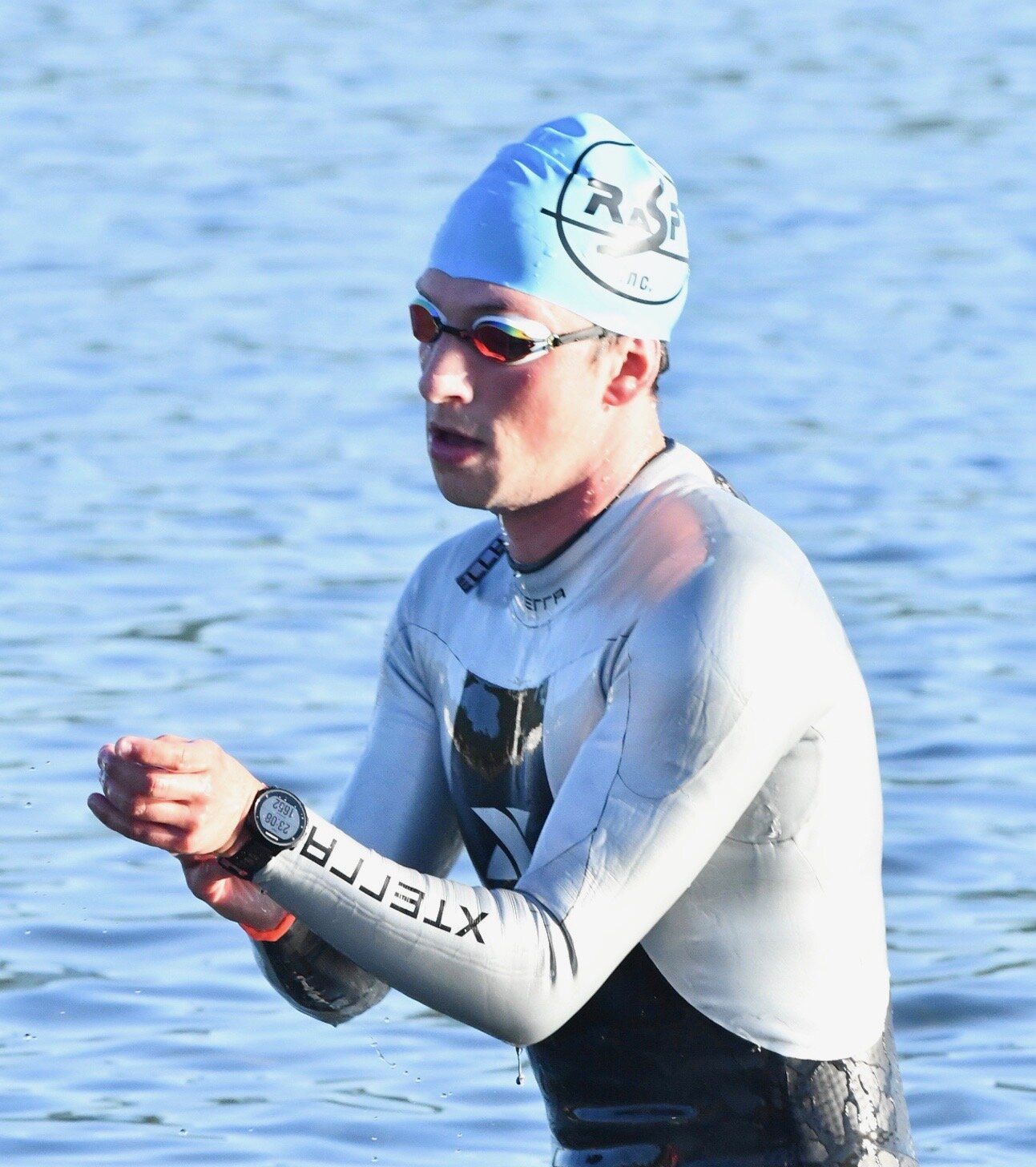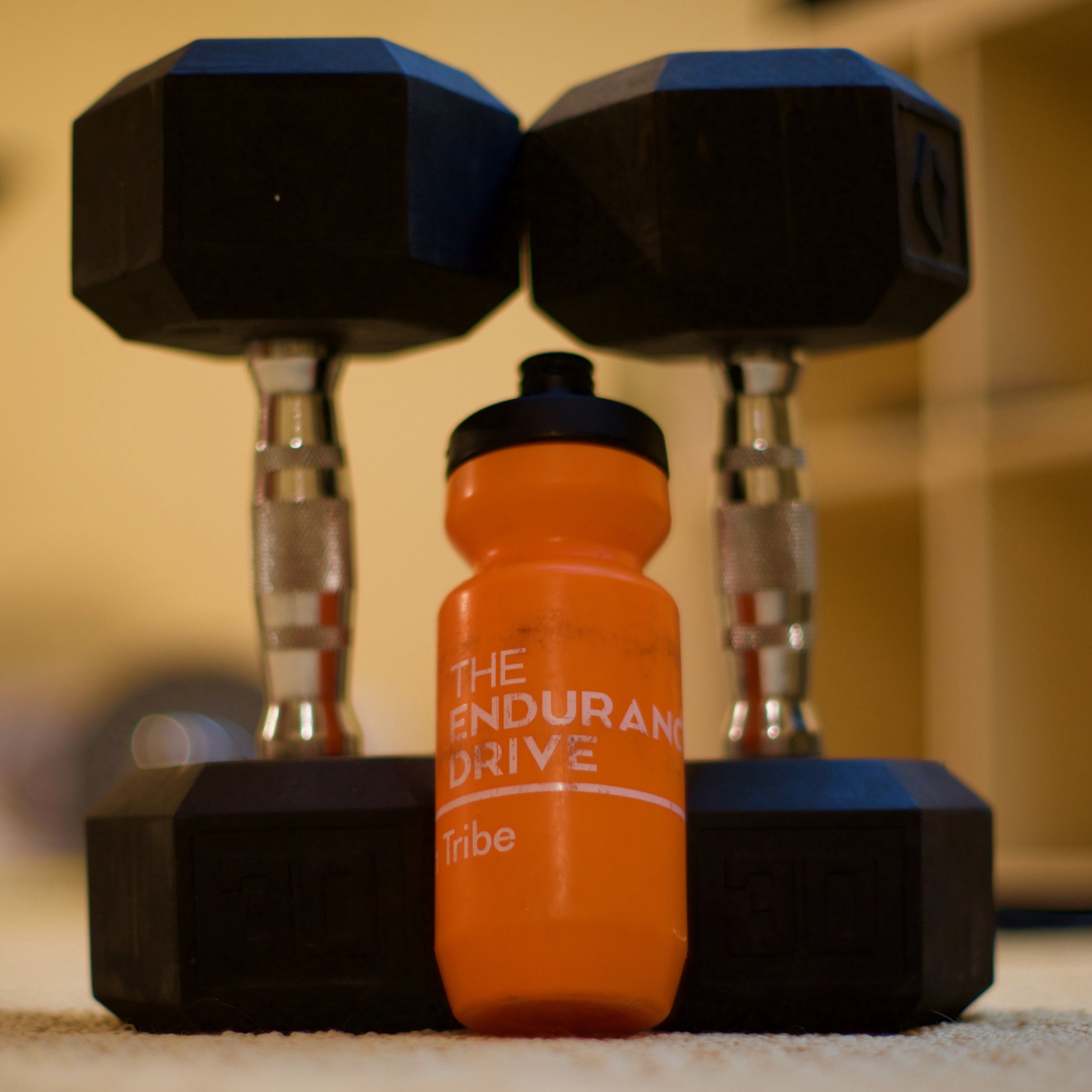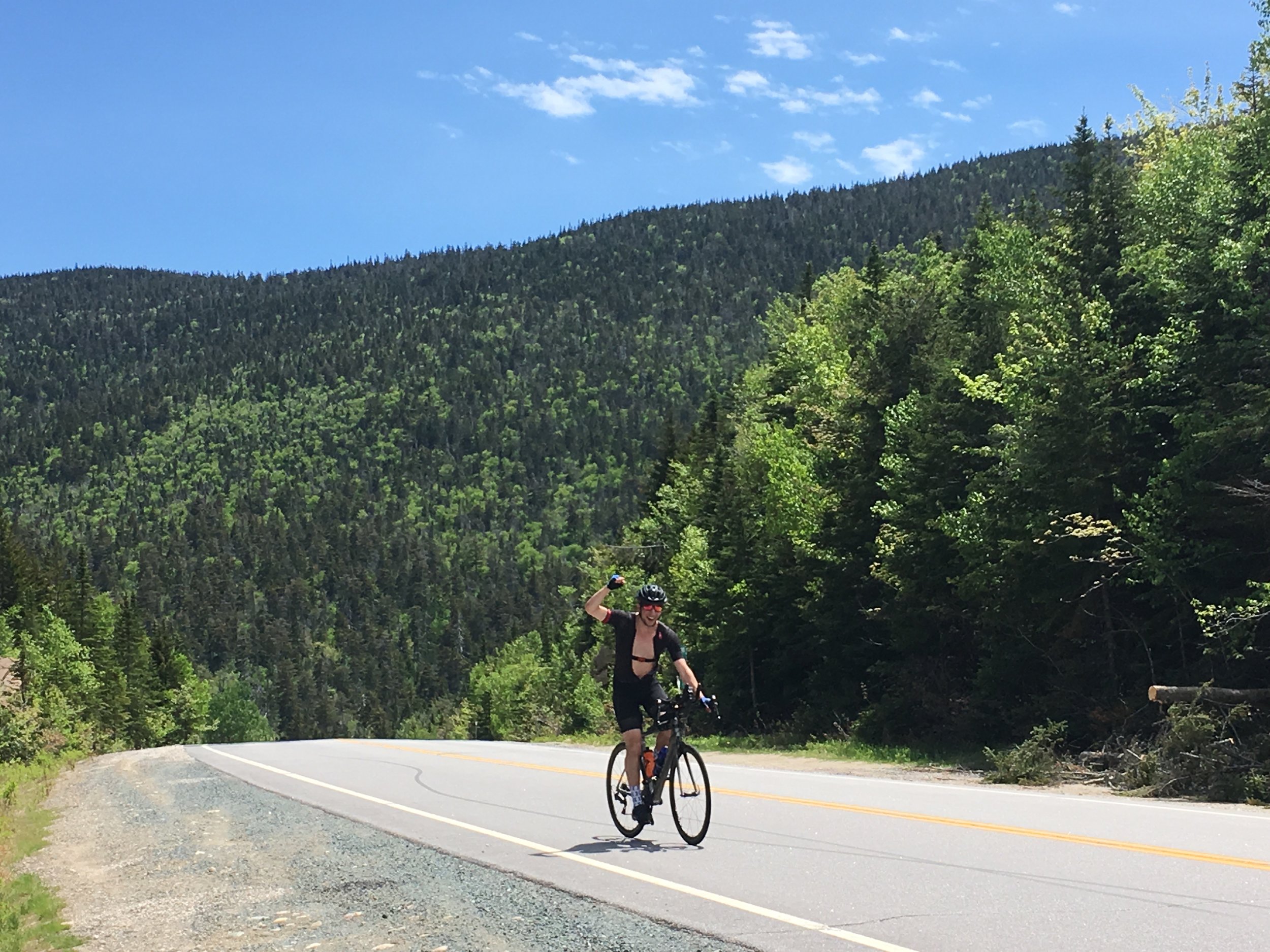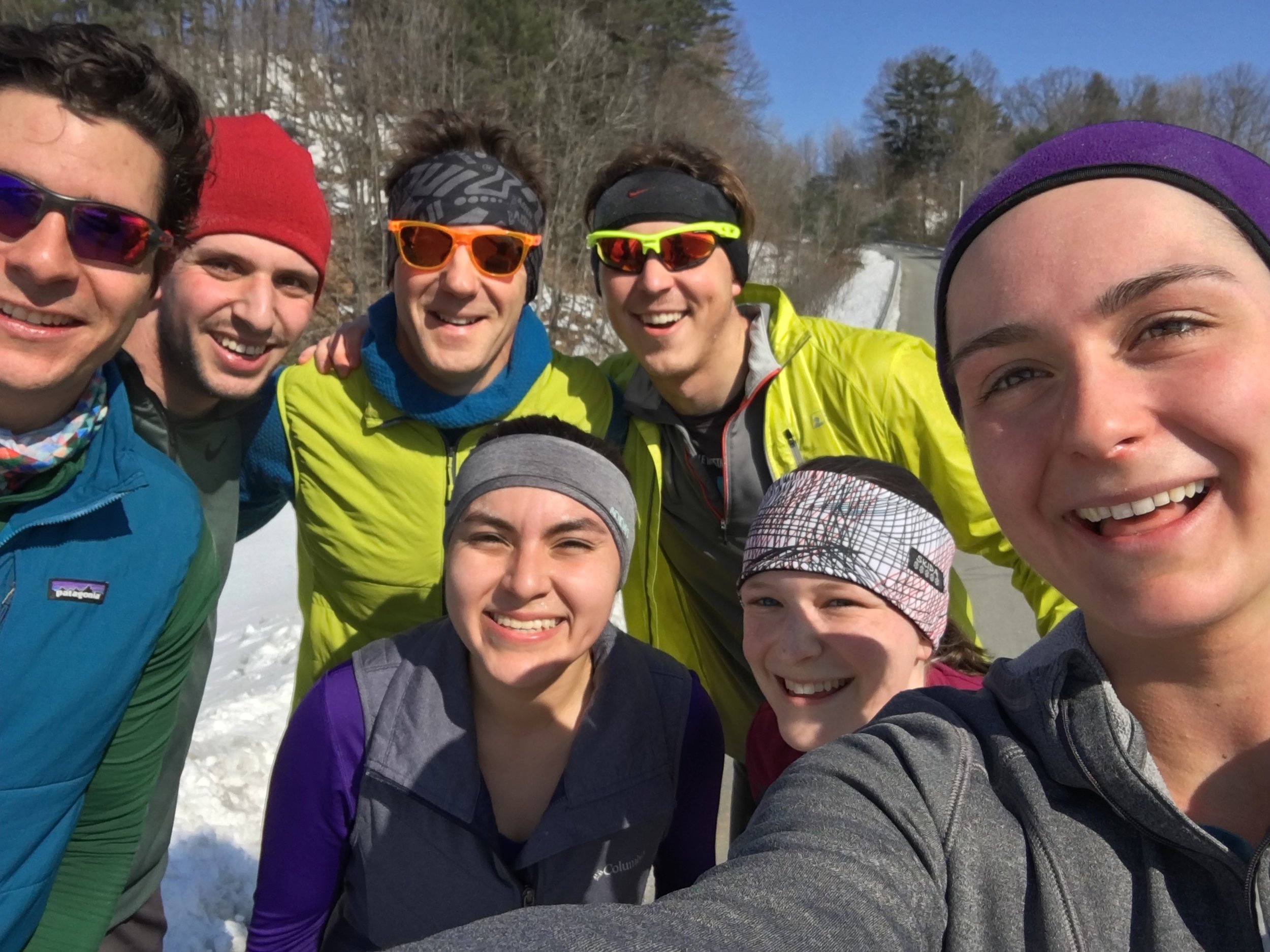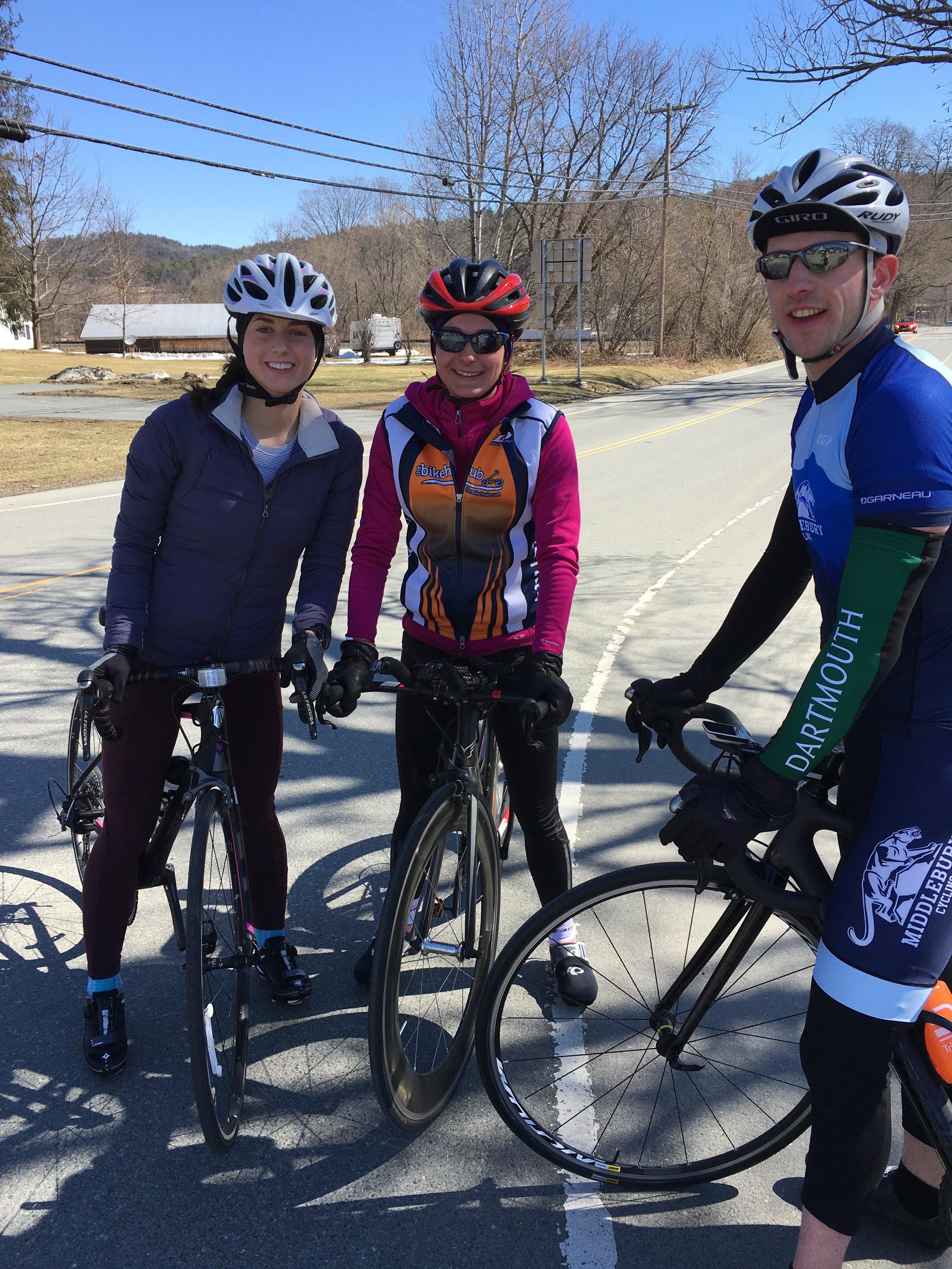Ironman Lake Placid 2021 -- Race Report by E. Thomas
Race information
What? Ironman Lake Placid
When? July 25, 2021
How far? 140.6 Miles
Where? Lake Placid, NY
Finish time: ~13:30
Goals
Goal A: Finish (✔)
Goal B: Finish (✔)
Goal C: Finish (✔)
Brief Preamble
I’m writing this selfishly to crystalize the experience for myself, but I’ve gotten a lot of value from reading other folks’ race reports, so I decided to share publicly. I’ll start out by saying that I don't have a ton endurance experience, and this isn’t a heroic tale of a Kona-qualifying race, but of the average joe trying to complete a full Ironman so he can brag to his friends and family.
I started running two years ago when a couple of buddies and I decided to do a “couch to marathon”. I quickly caught the endurance bug and wanted to try out triathlon, so I signed up for a half Ironman in 2020, which was cancelled. I ultimately decided to just full send a full Ironman to short circuit the process, since I knew I’d eventually want to tick that off the list. I did complete a half Ironman a few months before Lake Placid, but mostly just to orient myself with how to do a triathlon.
Pre-race
They say the sleep two nights before the race is the most important, so if you don’t get a wink the night before, it won’t blow up your day. Well, this notion was top of mind for me and I’d say about three to four nights out, my brain started whispering to me at night, “hey buddy, wouldn’t it suck if you not only couldn’t sleep two out, but three nights out as well!!”. I’d eventually get some shut eye, but often with the assistance of some over-the-counter aid, which I try to reserve for emergencies. Funny enough, I was able to sleep decently the night before.
I was surprisingly Zen the morning of. I woke up, stuffed a bunch of calories and electrolytes down my gullet, and patiently waited for my drivers (aka mom and girlfriend) to get up and take me down to the race start. It was 4:00am and they wouldn’t be up for another hour…
Fast forward a bit, I’m standing on the “sandy beach” of the lake swim start with what feels like thousands of other swimmers and spectators cheering us on. There’s a soft drizzle, music is blasting, and the Ironman announcer guy is walking around giving everyone high-fives. Zen turns to nerves, which turns to excitement, to nerves, to excitement, to Zen. The spin cycle repeats.
Swim
The swim was a big unknown for me as I had only completed a half Ironman distance OWS prior to doing the full. I live in NYC and was confined to mind-numbing laps in the pool as the area is not necessarily known for its pristine open water.
As a novice swimmer, I tried to appropriately seed myself with folks that would be going the same pace (although I’ve heard time and time again to bump yourself up to a faster time because everyone overestimates what they can do). I lined up with the 1:50 sign, which I thought meant that this group would be doing 1:50min/100yds. It turns out that this sign meant finish the full swim in an hour and 50 minutes, which is a much slower pace. I was one of the last people to get into the water.
At the start of the swim, I was in hand-to-hand combat trying to get around people that were doggy paddling, doing the breaststroke, etc. Eventually I got onto the cable, the crowd spread out, I unplugged my brain and was at the finish line before I knew it. There wasn’t much more to it than that. They say that the swim is the mandatory path you need to take to get to the real race start, which seemed to be the case.
Bike
The goal was to finish, not to go for gold, so I took my sweet time transitioning from the swim to the bike. Lake Placid has a gnarly bike and run course so I wanted to save every match that I had.
On the first hill out of town, I saw a bigger guy on a nice bike absolutely grinding at a low cadence. He told me that his electronic shifting had run out of battery and he was stuck in one of his hardest gears at mile 3 of 112 on a course with 7K feet of elevation gain. Poor guy. I wonder how he made out.
I consider the bike one of my “strong” suits, but the Lake Placid course has a special way of humbling all who test their luck on it. I was confident going in and I knew what to expect as I had pre-ridden the course with my coach and a few other people that I now consider good friends. My nutrition was dialed, I was planning to take in ~80 grams of carbs an hour through liquids and solids. However, about 30 miles into the race my legs started to feel pretty flat and my GI system was starting to show signs of distress. I’m not sure why this happened, maybe I was psyching myself out by constantly thinking about running an effing marathon after the bike. 150 watts felt hard when I knew I could hold 200+ watts for 6 hours.
But I had prepared for this. Testing your mettle is one of the beautiful things about endurance sports. I quickly shifted into a tunnel-vision headspace and focused on just getting to the next aid station, one pedal stroke at a time. This happened much sooner in the race than I would’ve liked, but it is what it is, and I was going to finish the damn race no matter what.
It’s a very challenging bike course and people were getting popped left and right. The 10-mile climb back into town (into what felt like a never-ending headwind) was a character builder, especially on the second loop after having biked 100 miles. But if you just keep pedaling, eventually you get to where you need to go. Special shout-out to the spectators that were lined up on basically the entire 56-mile loop, cheering everyone on.
Run
The run course. This is where the big bucks are made. I could not believe I was about to run a marathon after having just spent over an hour in the water and seven hours on the bike. But I paid to do this…
After over 15 minutes in transition, I laced up my sneakers and headed off into town. My legs felt surprisingly good and I had a little pep in my step. That little pep turned into a big pep when I saw my family and girlfriend right out of the gate cheering me on. As I got further into town, the electricity skyrocketed. Spectators were going nuts. Lake Placid really is a special race venue.
I continued to run well and was sticking to my plan of drinking a water and Gatorade at every aid station, along with taking in a gel every three. About 10 or so miles in, I started to really feel the culmination of the day’s activities (in both my legs and my gut), and I once again shifted to the tunnel vision survival mode of chipping away one mile at a time. But I have spent a lot of time in this pain cave and have learned to enjoy it. I knew what to do - one foot in front of the other, one mile at a time.
Eventually my legs were in searing pain and my gut simply could not take in anything more. I had reached circle seven of Dante’s Inferno, but still had 8 miles to go. It seemed like most people were walking at this point, and it was really tempting to do so myself, but the more I walked the longer I’d be out on the course – it wasn’t an option (except for going up hills). People were limping, people were cramping, some people were straight up laying on the road – but they all kept moving forward and it was incredibly inspiring. Pretty deep into the marathon, I was chatting with this older lady who said she was just starting her first loop and still had 20 miles to go, but she was determined to finish before the cutoff and there’s nothing that would stop her. It’s moments in time like this that stick with you for life.
In true Lake Placid style, at the very end of the run, they make you run up this big hill before hooking a left to get to the red-carpet finish line (thanks!). I was coming into the finish and it felt like thousands of people were cheering for me. I was getting misty eyed as I felt the culmination of many months of hard work and sacrifice finally come to an end. And then some random dude sprinted past me with 5ft to go before the finish, abruptly shaking me out of my self-indulgent moment…
Concluding Thoughts
This event will probably go down as a top life experience. There’s something special about testing the limits of your mind and body, as bonkers as it sounds. It’s fundamentally changed my outlook on what’s possible, which has permeated most aspects of my life. I feel blessed to have had the opportunity to do something like this and to have had the world-class support from my loved ones and coach (shout-out to the Endurance Drive!).
I think I’d do another one, but maybe not for a while. It’s an all-consuming commitment, but it turned out to be well worth it.

